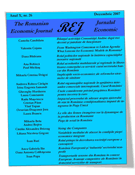Abstract:
In the following paper I want to succinctly present the main characteristics of the Kingdom of Romania during the period between 1918 and 1940, representing the two decades after the end of the First World War (World War I, The Great War) also known as the interwar period.
The scope of this endeavor is twofold: firstly, I intend this to be a useful and brief synthesis for the economic and social status of Romania during the twenty years following the great union of 1918, and, secondly, I want to shed some light on a period in our national history that’s too often shrouded in myth, exaggeration and hyperbole. In doing so, I will highlight and discuss the main indicators of the interwar Romanian economy, synthetic indicators, aggregated at the macroeconomic level (GDP, National Income, GDP per capita) as well as at social level (life expectancy, infant mortality) also taking into account the European context of the time.
I’ve chosen the interwar period immediately following the unification because of two main reasons. First, it’s the sole period when all the Romanian speaking people shared the same country, together with all the implied social, cultural and economic consequences, and, not the least, because the interwar period played a major role in shaping the future of Romanian throughout the 20th century until the present day.
